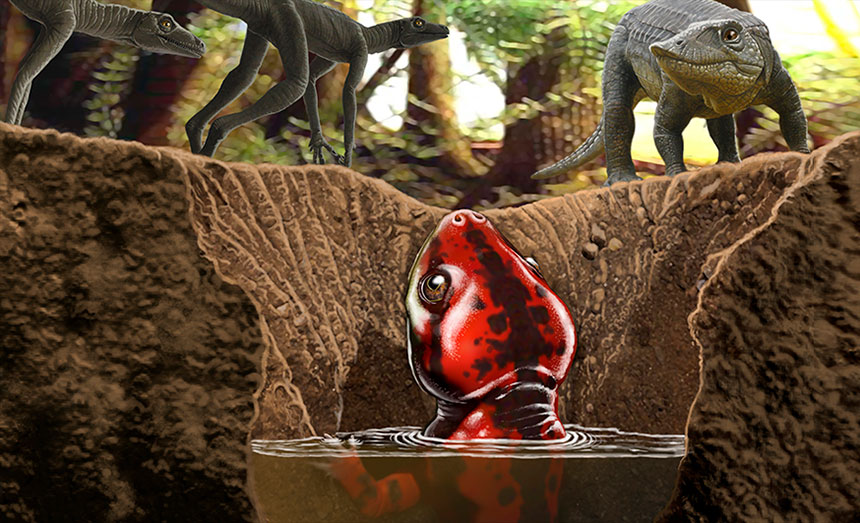New fossils shake up history of amphibians with no legs

Newly named fossils suggest that a weird and varied chapter in amphibian deep history isn’t totally over.
Small fossils about 220 million years old found along steep red slopes in Colorado represent a near-relative of modern animals called caecilians, says vertebrate paleontologist Adam Huttenlocker of the University of Southern California in Los Angeles.
Caecilians today have long wormy bodies with either shrunken legs or none at all. Yet the nearly 200 modern species of these toothy, burrow-dwelling tropical oddballs are genuine amphibians. The fossil creatures, newly named Chinlestegophis jenkinsi, still had legs but could be the oldest known near-relatives of caecilians, Huttenlocker and colleagues suggest.
A popular view of the amphibian family tree has put caecilians on their own long, peculiar branch beside the ancient frogs and salamanders. But a close look at the new fossils suggests a much earlier split from ancestral frogs and salamanders, the researchers propose June 19 in Proceedings of the National Academy of Sciences. The move puts the caecilians into “a strange but incredibly diverse” group, the stereospondyls, Huttenlocker says. These species included elongated, short-legged beasts with heads shaped like toilet lids.
Among the many stereospondyls, Huttenlocker speculates that caecilians came from “an aberrant branch of miniaturized forms that went subterranean.” And today’s legless burrowers could be this once-flourishing group’s sole survivors.